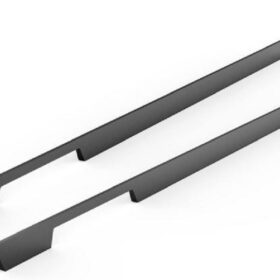Regulatory Compliance and Standards for Concealed Handles
Concealed handles are an increasingly popular design choice for various products, including furniture, appliances, and electronics. To ensure that concealed handles meet safety and quality requirements, regulatory bodies have established compliance standards that manufacturers must adhere to. This article provides a comprehensive overview of regulatory compliance and standards for concealed handles.
Safety Standards
One of the primary concerns with concealed handles is their potential to cause injuries. To address this issue, regulatory bodies have developed safety standards that specify design and construction requirements for concealed handles.
Pinch Points
Pinch points are areas where fingers or other body parts can be trapped and injured. Concealed handles must be designed to minimize pinch points, and any exposed edges must be rounded or covered.
Strength and Durability
Concealed handles must be strong and durable enough to withstand regular use. They must be able to support the weight of the door or drawer without breaking or deforming.
Quality Standards
In addition to safety standards, concealed handles must also meet quality standards to ensure their long-term performance and durability.
Material Selection
The materials used in concealed handles must be durable and resistant to wear and tear. Common materials include metal, plastic, and composite materials.
Corrosion Resistance
Concealed handles may be exposed to moisture and other corrosive substances. They must be corrosion-resistant to prevent rust and other forms of damage.
Finish and Appearance
The finish and appearance of concealed handles should be consistent with the overall design of the product. They should be aesthetically pleasing and free from defects.
Regulatory Bodies
Several regulatory bodies are responsible for setting and enforcing compliance standards for concealed handles, including:
The International Standards Organization (ISO)
ISO develops international standards for various products and industries, including concealed handles. The ISO 9229 standard specifies safety and performance requirements for recessed handles.
The American National Standards Institute (ANSI)
ANSI develops American national standards for a wide range of products and services. The ANSI/BHMA A156.10 standard addresses safety and performance requirements for concealed handles in furniture.
The European Committee for Standardization (CEN)
CEN is an organization that develops European standards. The EN 16386 standard specifies safety and performance requirements for concealed handles in furniture.
Compliance and Verification
Manufacturers of concealed handles must comply with the applicable regulatory standards to ensure their products meet safety and quality requirements. Compliance can be verified through testing and certification.
Testing
Concealed handles can be tested by independent laboratories to verify their compliance with safety and quality standards.
Certification
Manufacturers can obtain certification from accredited bodies to demonstrate compliance with regulatory standards. Certification provides assurance to consumers that the concealed handles have been tested and meet the required safety and performance criteria.
Conclusion
Regulatory compliance and standards for concealed handles are essential to ensure the safety, quality, and performance of these products. By adhering to these standards, manufacturers can produce concealed handles that meet the expectations of end-users and comply with applicable regulations. Compliance and verification through testing and certification provide assurance that concealed handles are fit for their intended use and pose minimal risk of injury or damage.
-
2024-11-29Top Trends in Modern Kitchen Cabinet Pulls for 2024
-
2024-11-28The Ultimate Guide to Modern Kitchen Cabinet Pulls- Materials, Styles, and Tips
-
2024-11-27Elevate Your Kitchen Design with These Must-Have Modern Cabinet Pulls
-
2024-11-26Sleek and Stylish- The Best Modern Kitchen Cabinet Pulls for a Contemporary Look










